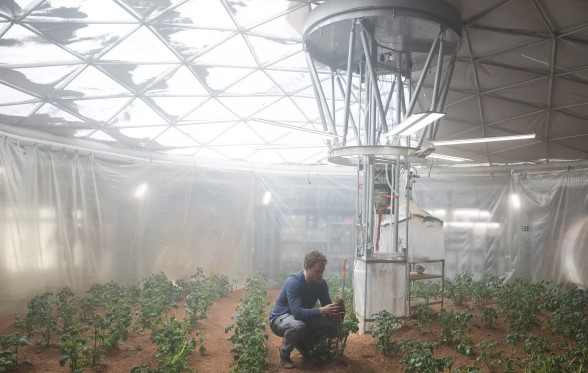
In the 2015 blockbuster The Martian, Matt Damon plays an astronaut who gets stranded on Mars and survives by growing potatoes, producing enough food to last months.
China’s lunar mission could bring that piece of science fiction a step closer to reality if it succeeds in growing the first flower on the moon in less than a hundred days’ time, an experiment that the China National Space Administration said it would soon broadcast.
When the Chang’e 4 spacecraft landed on the far side of the moon on January 3, its cargo included an airtight container known as a “moon surface micro-ecological circle”.
At 18cm high and 16cm in diameter, the aluminium alloy cylinder contains silkworm eggs and seeds for potatoes and a kind of cress.
It weighs only 3kg but cost more than 10 million yuan (about US$1.5 million) – the internal camera alone cost 600,000 yuan.
If all goes well, both plants will root and sprout in the container, producing the first flower on the surface of the moon towards the end of a 100-day experimental period, according to the space agency.
Meanwhile, the silkworm eggs will also complete the full life cycle, from hatching to turning into moths.
The plants would not be the first flowers grown in space though – on January 16, 2016, Nasa shared photographs of a zinnia in bloom in a plant system aboard the International Space Station, orbiting about 300km above the Earth.
Cultivating the plants won’t be easy – temperatures on the moon’s surface can go over 100 degrees Celsius (202 degrees Fahrenheit) in the day and drop to minus 100 degrees at night. Radiation from the sun and the lower gravity will also pose problems.
Professor Xie Gengxin, the Chinese scientist in charge of the lunar plant experiment, said that if successful, the project would signal that China was catching up in space exploration, state-run Beijing Youth Daily reported.
Xie said it would lay the foundation for humans to live in outer space.
Xie said the team had designed the container to maintain a temperature of between 1 and 30 degrees, allow in natural light and feed the plants with water and a nutrient solution.
The silkworms would consume the oxygen released by the plants, emit carbon dioxide and fertilise the plants with their dung, he said.
Xie said a similar experiment would be conducted on Earth for comparison.





























